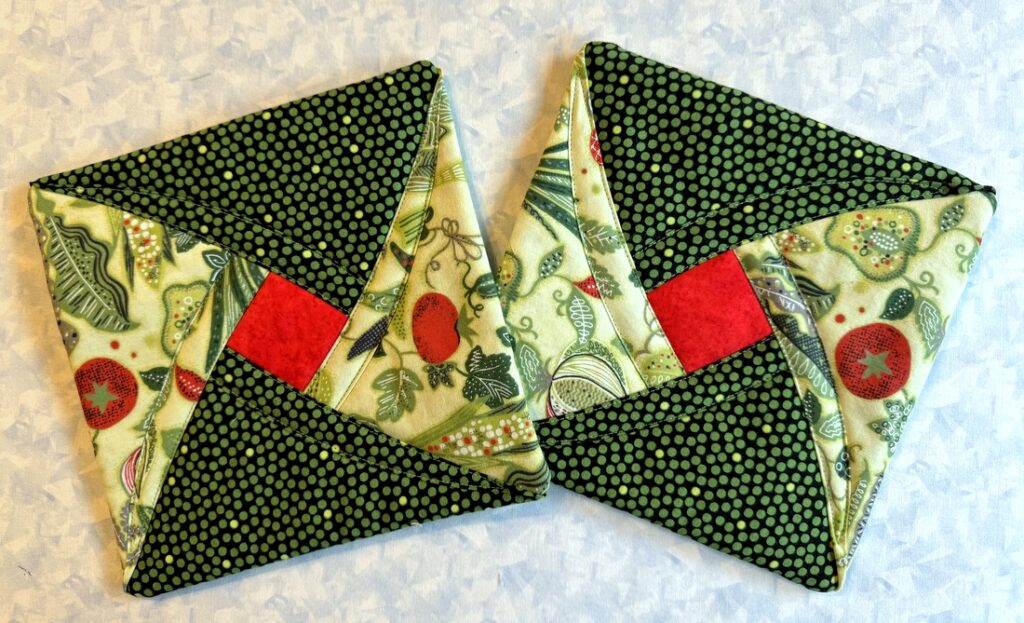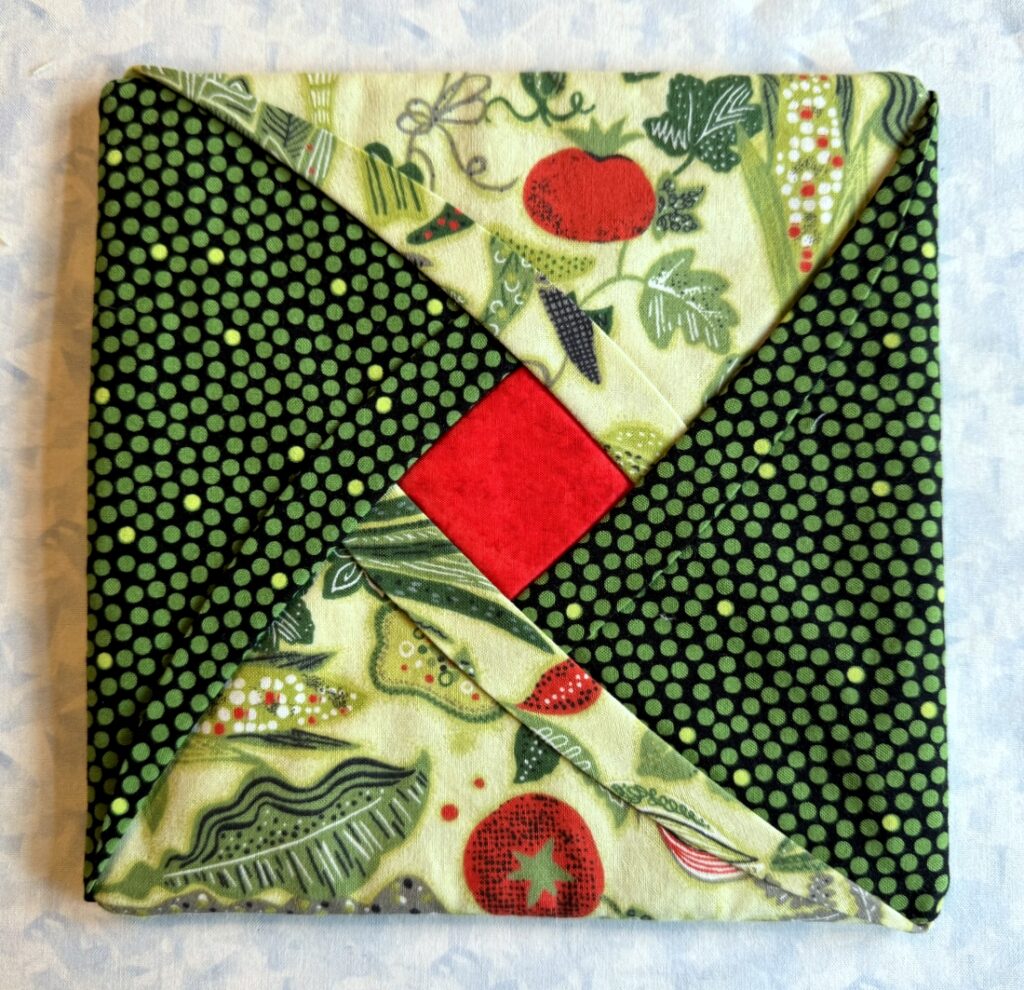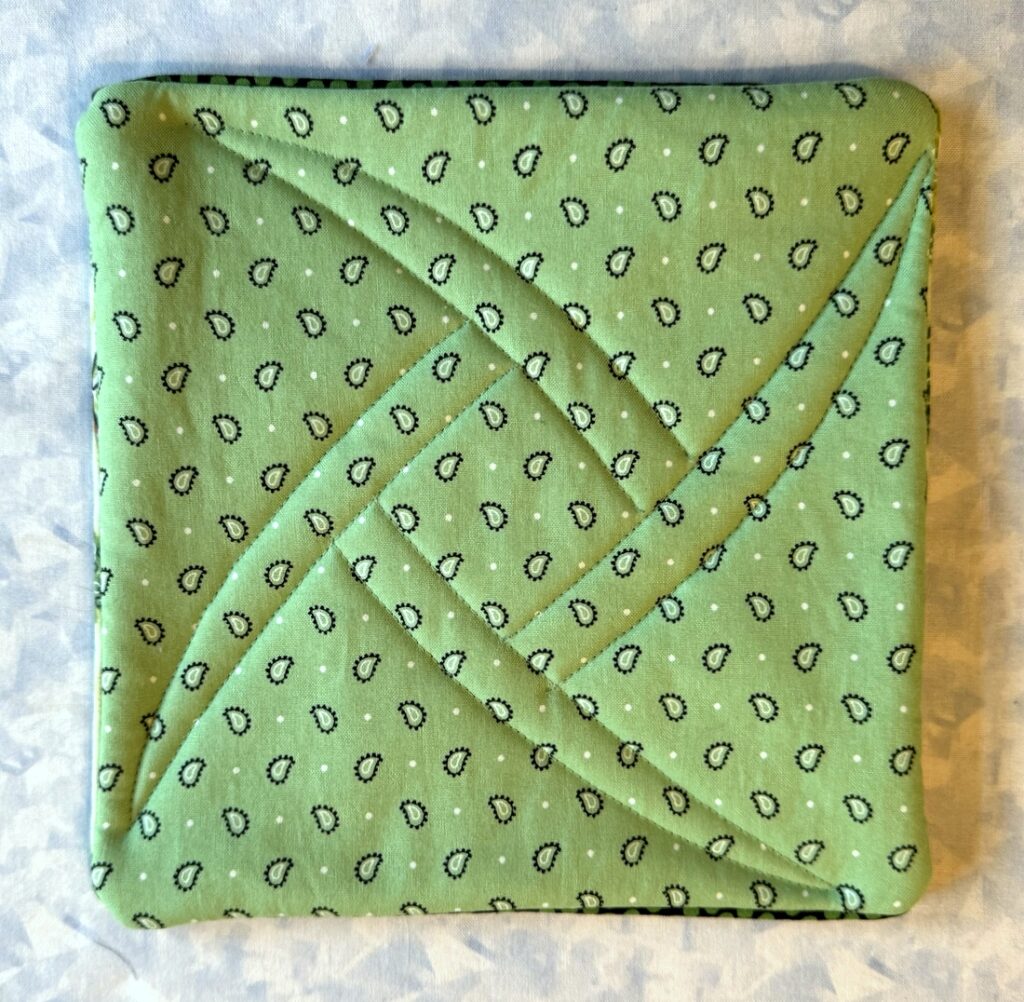‘Tis the Season . . .
. . . to be crafty. Yes, the holidays are winding down but crafting useful and beautiful items is never out of season, right? These cheerful hot pads in the traditional Christmas colors of red and green are right in style all year round:

When my twin Diane was visiting over Thanksgiving, we went through project bins in my sewing room, deciding which projects I should finish and which I should recycle or donate. In one bin I was surprised to find a pair of hot pads that were almost completely finished. All that was missing was the final step of stitching through the layers to hold them in place.
Based on my notes found in the bin, I probably made these back in 2011 when I was teaching a class at the Pine Needle Quilt Shop, now home to the Lake Oswego branch of Montavilla Sewing Center. I didn’t want them anymore but Diane sure did so I promised to finish them before she went home. Both of us forgot all about them until well after she returned home to Georgia in early December.
Each hot pad is made from six 9″ squares of cotton fabric and a 9″ square of InsulBright, an insulating thermal batting. Here’s a close-up of one before the final step of stitching through the layers:
 The stitching is optional but I always recommended it because it helps keep the shape of the hot pad if it’s machine washed and dried. And I like the way it looks from the back:
The stitching is optional but I always recommended it because it helps keep the shape of the hot pad if it’s machine washed and dried. And I like the way it looks from the back:
 Off they went in the mail to Diane last week. They arrived yesterday so now I can show them to you.
Off they went in the mail to Diane last week. They arrived yesterday so now I can show them to you.
